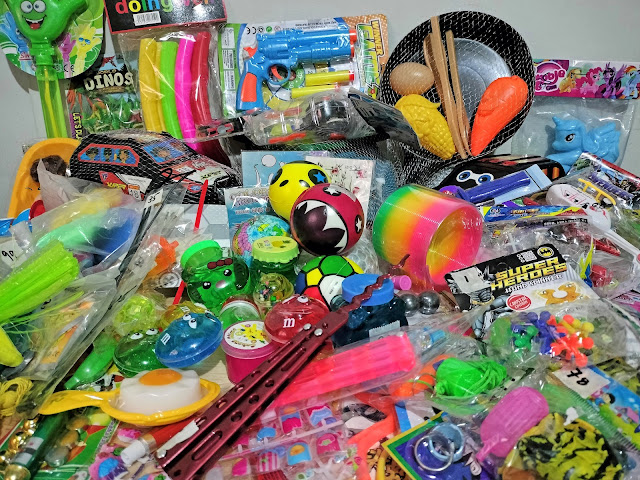EcoWaste Coalition to Parents and Children: Be Cautious of Cheap But Poorly Labeled, Low Quality Toys
With the start of the “ber” season, the EcoWaste Coalition rushed to remind parents and their children to be extra cautious when buying toys, especially cheap ones that are not duly authorized, labeled and assessed as safe for kids to play with.
The watchdog group, which has been keeping tabs on unsafe toys since 2011, issued the timely reminder following the test buys it conducted targeting products sold below P35 near elementary schools and in public markets.
“Our monitoring shows that cheap but poorly labeled, low quality toys are offered for sale in the vicinity of schools and in public markets. Parents are advised to guide and assist their children in choosing toys that are appropriate for their age and are safe to play with,” said Aileen Lucero, National Coordinator, EcoWaste Coalition.
From August 31 to September 3, the group purchased a total of 105 toys sold for P5 to P35 each from candy and toy shops, “sari-sari” stores, sidewalk vendors and “Presyong Divisoria” stores in nine cities, namely Caloocan, Makati, Malabon, Mandaluyong, Manila, Navotas, Quezon, San Juan and Valenzuela.
None of the 105 toys had a valid Certificate of Product Notification (CPN), which means that these toys have not gone through the quality and safety assessment of the Food and Drug Administration (FDA) and that using them may pose health risks to consumers.
Also, not even one of the 105 toys is compliant to the labeling requirements under Republic Act 10620, or the Toy and Game Safety Labeling Act of 2013. Worst, 59 of the samples had zero labeling information. RA 10620's Implementing Rules and Regulations were belatedly issued on January 20, 2019 following a petition for writ of mandamus filed by the EcoWaste Coalition, Laban Konsyumer Inc. and 20 mothers in 2018.
Among the non-compliant toys purchased are products posing safety hazards, including benzene-laced blow plastic balloons, artificial nail set with adhesive containing dibutyl phthalate (DBP), toy flashlights and laser pointers with tiny button cell batteries, bubble toys that may present a microbiological risk, slime toys that may contain boron and biocides, toy knives and weapons with sharp edges and points, and toys posing choking risk.
To protect children from harm, the group urged consumers to look out for the following red flags to avoid paying for toys that could present safety hazards to vulnerable children:
- Toys with incomplete, incomprehensible or zero labeling information, including manufacturer’s and/or distributor’s markings and cautionary statements.
- Toys that can fit in a child’s mouth or with small parts that can break off or detach and get swallowed, stuck in the throat, or pushed into the ears or nostrils.
- Toys with sharp edges or points, or those that can easily break if dropped, which may bring about abrasion, contusion, laceration or eye injury hazard.
- Toys that come with cords longer than 12 inches, which may create a strangulation hazard.
- Toys that are made of soft, strong-smelling polyvinyl chloride (PVC) or vinyl plastic, which may contain hormone disrupting chemicals called phthalates, toxic metals like cadmium and lead, and other substances of concern.
- Toys decorated with lead-based paint, which can crack and peel over time and result in lead exposure; due to their customary hand-to-mouth behavior, a child may chew on a lead painted toy or ingest lead paint chips or dust containing lead from a surface coating.
During the “ber” months, the EcoWaste Coalition will intensify its promotion of chemical safety and zero waste principles and practices, including monitoring toys for chemicals of concern and other hazards.






Comments